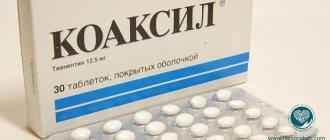The mechanism of action of trimeperidine is based on stimulation of mu opioid receptors. They are responsible for inhibition processes, especially in the nerve pathways that form the sensation of pain. As a result, the release of substance P from the endings of sensory neurons decreases. This blocks the pain impulse. In addition, the following physiological effects are observed:
- anti-shock
- decrease in blood pressure and body temperature
- elimination of spasms of the biliary tract, gastrointestinal tract, bronchi (antitussive effect)
- drowsiness
- relative psychostimulation (not clearly expressed), euphoria
- decreased uterine muscle tone
- depression of the respiratory center
Thus, trimeperidine hydrochloride is close in its pharmacological action to morphine.
At the same time, it does not depress the respiratory center so much. Effects begin to appear after subcutaneous administration for approximately 10-20 minutes. The substance actively affects the functioning of the body for up to 3-4 hours.
Pharmacological properties of the drug Trimeperidine
Trimeperidine belongs to the group of narcotic analgesics. As an analogue of the phenyl-N-methylpiperidine part of the morphine molecule, it has pronounced analgesic activity. The mechanism of action is due to a decrease in the perception of pain impulses in the central nervous system. Trimeperidine reduces the summative ability of the central nervous system, inhibits conditioned reflexes, and enhances the anesthetic effect of procaine and other local anesthetics. When using trimeperidine during anesthesia, the latter deepens slightly, but at the same time analgesia increases, which leads to a decrease in tachycardia and normalization of blood pressure. To a lesser extent than morphine, it depresses the respiratory center and stimulates the vomiting center. Moderately eliminates spasms of smooth muscles, but increases tone and enhances contractions of the uterine muscles. The effect occurs within 10–20 minutes and after a single application is observed for 3–4 hours.
Formation of habituation
Most opiates act directly on endogenous mu receptors located in the brain structures responsible for emotions, pleasure and pain. Such a close relationship explains their ability to form dependence when used regularly. The potential for trimeperidine is moderate, lower than that of morphine and heroin.
The risk of opiate addiction for medical reasons is extremely low. It applies exclusively to patients with incurable diseases requiring palliative pain relief. In other cases, Promedol is used situationally or for a short course during a hospital stay for an emergency condition.
Pure dependence on trimeperidine is rather an exception to the rule. Addiction is typical for established drug addicts or susceptible individuals with a burdened psychoneurological history. Withdrawal syndrome develops gradually, but takes no more than a month.
Having accidentally lost Promedol, the patient faces the first somatovegetative symptoms of withdrawal. Typical signs of addiction appear: awareness of attraction to the substance, a state of discomfort and tension when not taking it. General health progressively worsens in the form of sleep disturbances, lacrimation, dilated pupils, chills, hot flashes, and weakness. Patients complain of the appearance of “goose bumps”, irresistible irritability and anxiety.
Withdrawal from narcotic analgesics is more severe than from heroin. Its severity is proportional to the duration of the addiction and the size of the dose taken.
Use of the drug Trimeperidine
S/c, i/m, i/v. For adults, 1 ml of 1 or 2% solution is administered subcutaneously; for intense pain, especially with malignant tumors and severe injuries - up to 2 ml of 2% solution. To relieve labor pain, a dose of 1–2 ml of 2% solution is administered subcutaneously when the cervical pharynx is dilated by one and a half to two fingers and at normal heart rhythm and fetal heart rate. If necessary, trimeperidine is administered again after 2-3 hours. As the main component of premedication - subcutaneously or intramuscularly at a dose of 0.02-0.03 g (1-1.5 ml of 2% solution) together with atropine sulfate in a dose of 0.0005 g (0.5 mg) 30–45 minutes before surgery (for emergency premedication, IV is used). In the absence of breathing problems in the postoperative period, 1 ml of 1 or 2% solution is administered subcutaneously as an analgesic and anti-shock agent. Higher doses subcutaneously: single - 0.04 g, daily - 0.16 g. Children over 2 years old and depending on age - 0.003–0.01 g.
Trimeperidine
International name of the medicinal substance:
Trimeperidine The list of drugs containing the active substance Trimeperidine is given after the description.
Pharmacological action:
An agonist of opioid receptors (mainly mu receptors), it has an analgesic (weaker and shorter than morphine), antishock, antispasmodic, uterotonic and mild hypnotic effect.
Activates the endogenous antinociceptive system and thus disrupts the interneuronal transmission of pain impulses at various levels of the central nervous system, and also changes the emotional coloring of pain. To a lesser extent than morphine, it depresses the respiratory center, and also stimulates the n.vagus centers and the vomiting center. It has an antispasmodic effect on the smooth muscles of internal organs (in spasmogenic effect it is inferior to morphine), promotes dilatation of the cervix during childbirth, increases tone and enhances myometrial contractions. With parenteral administration, the analgesic effect develops after 10-20 minutes, reaches a maximum after 40 minutes and lasts 2-4 hours or more (with epidural anesthesia - more than 8 hours). When taken orally, the analgesic effect is 1.5-2 times weaker than when administered parenterally. Pharmacokinetics:
Absorption is rapid with any route of administration. After oral administration, TCmax is 1-2 hours. After intravenous administration, a rapid decrease in plasma concentration is observed and after 2 hours only trace concentrations are determined. Communication with plasma proteins - 40%. Metabolized mainly in the liver by hydrolysis with the formation of meperidic and normeperidic acids, followed by conjugation. T1/2 - 2.4-4 hours, increases with renal failure. It is excreted in small quantities by the kidneys (including 5% unchanged).
Indications:
Pain syndrome (strong and moderate intensity): postoperative pain, unstable angina, myocardial infarction, dissecting aortic aneurysm, renal artery thrombosis, thromboembolism of the arteries of the extremities and pulmonary artery, acute pericarditis, air embolism, pulmonary infarction, acute pleurisy, spontaneous pneumothorax, peptic ulcer of the stomach and duodenum, perforation of the esophagus, chronic pancreatitis, hepatic and renal colic, paranephritis, acute dysuria, foreign bodies of the bladder, rectum, urethra, paraphimosis, priapism, acute prostatitis, acute attack of glaucoma, causalgia, acute neuritis, lumbosacral radiculitis, acute vesiculitis, thalamic syndrome, burns, pain in cancer patients, trauma, intervertebral disc protrusion, postoperative period.
Childbirth (pain relief for women in labor and stimulation). Acute left ventricular failure, pulmonary edema, cardiogenic shock. Preparation for surgery (premedication), if necessary - as an analgesic component of general anesthesia. Neuroleptanalgesia (in combination with antipsychotics). Contraindications:
Hypersensitivity, depression of the respiratory center;
with epidural and spinal anesthesia - impaired blood clotting (including during anticoagulant therapy), infection (risk of infection entering the central nervous system); diarrhea against the background of pseudomembranous colitis caused by cephalosporins, lincosamides, penicillins, toxic dyspepsia (delayed elimination of toxins and associated exacerbation and prolongation of diarrhea); simultaneous treatment with MAO inhibitors (including within 21 days after their use). Caution. Abdominal pain of unknown etiology, surgical interventions on the gastrointestinal tract, urinary system, bronchial asthma, COPD, convulsions, arrhythmias, arterial hypertension, CHF, respiratory failure, hepatic and/or renal failure, myxedema, hypothyroidism, adrenal insufficiency, central nervous system depression, intracranial hypertension , TBI, prostatic hyperplasia, suicidality, emotional lability, drug addiction (including history), severe inflammatory bowel diseases, urethral strictures, alcoholism, seriously ill, debilitated patients, cachexia, pregnancy, lactation, old age , childhood. Side effects:
From the digestive system: more often - constipation, nausea and/or vomiting;
less often - dry mouth, anorexia, spasm of the biliary tract, gastrointestinal irritation; rarely - with inflammatory bowel diseases - paralytic intestinal obstruction and toxic megacolon (constipation, flatulence, nausea, stomach cramps, gastralgia, vomiting); frequency unknown - hepatotoxicity (dark urine, pale stools, icterus of the sclera and skin). From the nervous system and sensory organs: more often - dizziness, weakness, drowsiness; less often - headache, blurred vision, diplopia, tremor, involuntary muscle twitching, euphoria, discomfort, nervousness, fatigue, nightmares, unusual dreams, restless sleep, confusion, convulsions; rarely - hallucinations, depression, in children - paradoxical agitation, anxiety; frequency unknown - convulsions, muscle rigidity (especially respiratory muscles), ringing in the ears; frequency unknown - slowing of the speed of psychomotor reactions, euphoria, disorientation. From the respiratory system: less often - depression of the respiratory center. From the cardiovascular system: more often - decreased blood pressure; less often - arrhythmias; frequency unknown - increased blood pressure. From the urinary system: less often - decreased diuresis, spasm of the ureters (difficulty and pain when urinating, frequent urge to urinate). Allergic reactions: less often - bronchospasm, laryngospasm, angioedema; rarely - skin rash, itching, swelling of the face, Local reactions: hyperemia, swelling, burning at the injection site. Other: less often - increased sweating; frequency unknown - addiction, drug dependence. Overdose. Symptoms of acute and chronic overdose: nausea, vomiting, cold sticky sweat, confusion, dizziness, drowsiness, decreased blood pressure, nervousness, fatigue, bradycardia, severe weakness, slow labored breathing, hypothermia, anxiety, miosis (with severe hypoxia, the pupils may be dilated ), convulsions, hypoventilation, cardiovascular failure, in severe cases - loss of consciousness, respiratory arrest, coma. Treatment: gastric lavage, maintaining sufficient pulmonary ventilation, systemic hemodynamics, normal body temperature. Patients should be under continuous monitoring; if necessary, perform mechanical ventilation, breathing stimulants; use of a specific opioid antagonist - naloxone. Interaction:
Strengthens the depressive effect and respiratory depression of narcotic analgesics, sedatives, hypnotics, antipsychotic drugs (neuroleptics), anxiolytics, drugs for general anesthesia, ethanol, muscle relaxants.
Against the background of systematic use of barbiturates, especially phenobarbital, a decrease in the analgesic effect is possible. Strengthens the hypotensive effect of drugs that lower blood pressure (including ganglion blockers, diuretics). Drugs with anticholinergic activity, antidiarrheal drugs (including loperamide) increase the risk of constipation, including intestinal obstruction, urinary retention and central nervous system depression. Enhances the effect of anticoagulants (plasma prothrombin should be monitored). Buprenorphine (including previous therapy) reduces the effect of other opioid analgesics; against the background of the use of high doses of mu-opioid receptor agonists, it reduces respiratory depression, and against the background of the use of low doses of mu- or kappa-opioid receptor agonists, it increases; accelerates the onset of symptoms when taking mu-opioid receptor agonists is stopped due to drug dependence, and when they are suddenly discontinued, it partially reduces the severity of these symptoms. When used simultaneously with MAO inhibitors, severe reactions may develop due to possible overexcitation or inhibition of the central nervous system with the occurrence of hyper- or hypotensive crises (should not be prescribed while taking MAO inhibitors, as well as within 14-21 days after stopping their use). Naloxone restores breathing, eliminates analgesia after the use of morphine, reduces the effect of opioid analgesics, as well as the respiratory depression and central nervous system caused by them; Large doses may be required to neutralize the effects of butorphanol, nalbuphine and pentazocine, which were prescribed to eliminate the undesirable effects of other opioids; may accelerate the onset of symptoms associated with drug addiction. Naltrexone accelerates the appearance of symptoms against the background of drug addiction (symptoms can appear as early as 5 minutes after administration of the drug, last for 48 hours, and are characterized by persistence and difficulty in eliminating them); reduces the effect of opioid analgesics (analgesic, antidiarrheal, antitussive); does not affect symptoms caused by histamine reaction. Reduces the effect of metoclopramide. Special instructions:
During the treatment period, it is necessary to refrain from driving vehicles and engaging in other potentially hazardous activities that require increased concentration and speed of psychomotor reactions, and avoid consuming ethanol.
Preparations containing the active ingredient Trimeperidine:
Promedol
The information provided in this section is intended for medical and pharmaceutical professionals and should not be used for self-medication. The information is provided for informational purposes only and cannot be considered official.










